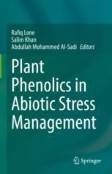Search
Search Results
-
Effect of atmospheric N deposition on rhizosphere soil microbial community composition in a semi-arid grassland
AimsHuman activities have more than doubled the input of atmospheric reactive nitrogen into terrestrial ecosystems, affecting plant and soil...

-
Are anthropogenic soils from dumpsites suitable for arable fields? Evaluation of soil fertility and transfer of potentially toxic elements to plants
Background and purposeThe fertility of anthropogenic soils developed from dumpsites used for arable fields is not well-studied. The study aimed to...

-
Wetland water quality patterns and anthropogenic pressure associations across the continental USA
Anthropogenic impacts on lake and stream water quality are well established but have been much less studied in wetlands. Here we use data from the...

-
Impact of Anthropogenic Compounds on Biodiversity: A Comprehensive Analysis
Anthropogenic chemicals are substances that are created mainly in industries for agriculture, medicine, and other commercial purposes. When exposed...
-
Anthropogenic deposition increases nitrogen-phosphorus imbalances in tree vegetation, litter and soil of Atlantic Forest remnants
AimsIncreased N deposition may cause nutritional imbalances in tropical ecosystems, by shifting N:P stoichiometry (as they are typically P-limited)...

-
Evaluating the role of bacterial diversity in supporting soil ecosystem functions under anthropogenic stress
Ecosystem functions and services are under threat from anthropogenic global change at a planetary scale. Microorganisms are the dominant drivers of...

-
Natural and Anthropogenic Lakes
Central Europe is naturally very rich in lakes in many regions, partly as a result of glacial landscape history. In addition, there are a large...
-
Diverse marine benthic communities and reduced anthropogenic contaminants near Scott Base (Hut Point Peninsula, Ross Island, Antarctica)
Antarctic marine ecosystems are largely thought to be among the planet’s least impacted, yet habitats adjacent to research stations can be heavily...

-
Nitrogen deposition mediates more stochastic processes in structuring plant community than soil microbial community in the Eurasian steppe
Anthropogenic environmental changes may affect community assembly through mediating both deterministic (e.g., competitive exclusion and environmental...
-
Anthropogenic Eutrophication Drives Major Food Web Changes in Mwanza Gulf, Lake Victoria
Discerning ecosystem change and food web dynamics underlying anthropogenic eutrophication and the introduction of non-native species is necessary for...

-
Quantitative assessment of soil acidification in four Chinese forests affected by nitrogen deposition
AimsNitrogen (N) deposition increases risks of accelerating soil acidification, but its impact could vary depending on acid-neutralizing capacity...

-
Are stable isotopes an efficient tool for tracking the effect of anthropogenic activities on mangrove food web structure and function?
Understanding and connecting the impact of anthropogenic activities on mangrove food webs is a research challenge. Has research on the subject been...

-
Transformation of Ecosystems of Floodplain Water Bodies under Current Natural and Anthropogenic Changes and Possible Strategies for Their Conservation
AbstractThis review summarizes information on the main negative factors affecting the state of floodplain water bodies ecosystems, describes the most...

-
Lowland forest fragment characteristics and anthropogenic disturbances determine alien plant species richness and composition
Loss of habitat and biological invasion are the main threats to biodiversity. In intensive agricultural or urban landscapes, forest fragments, even...

-
Anthropogenic Fingerprints of Sedimentary Deposits in a Himalayan Wetland Ecosystem over the Last 8 Centuries
Understanding sedimentary deposits in wetlands is crucial for their effective management. In this study, we used an integrated approach to estimate...

-
Differential Responses of Soil Bacterial and Fungal Communities to Simulated Nitrogen Deposition in a Temperate Wetland of Northeastern China
China has experienced a notorious increase in nitrogen (N) deposition as a result of anthropogenic activities, particularly in temperate areas. While...

-
Anthropogenic Stress and Phenolic Compounds: An Environmental Robustness Diagnostics Compound Family in Stress Ameliorations
Natural ecosystems are progressively vulnerable to a number of multiple anthropogenic stressors, particularly with water, ozone, air pollutants,...
-
Elevational gradient regulates the effects of short-term nutrient deposition on soil microorganisms and SOM decomposition in subtropical forests
AimsAlthough studies have investigated how nitrogen (N) and phosphorus (P) deposition alone alter terrestrial ecosystems, the responses of soil...

-
Soil elemental cycles become more coupled in response to increased nitrogen deposition in a semiarid shrubland
Background and aimsIncreased N deposition can break the coupled associations among chemical elements in soil, many of which are essential plant...

-
Litterfall Production and Decomposition in Tropical and Subtropical Mangroves: Research Trends and Interacting Effects of Biophysical, Chemical, and Anthropogenic Factors
The present systematic literature review (SLR) synthesized the literature on mangrove litterfall production and decomposition from studies published...

